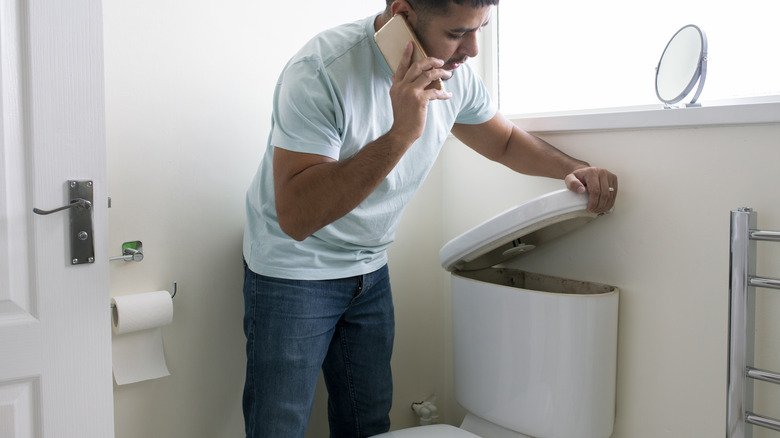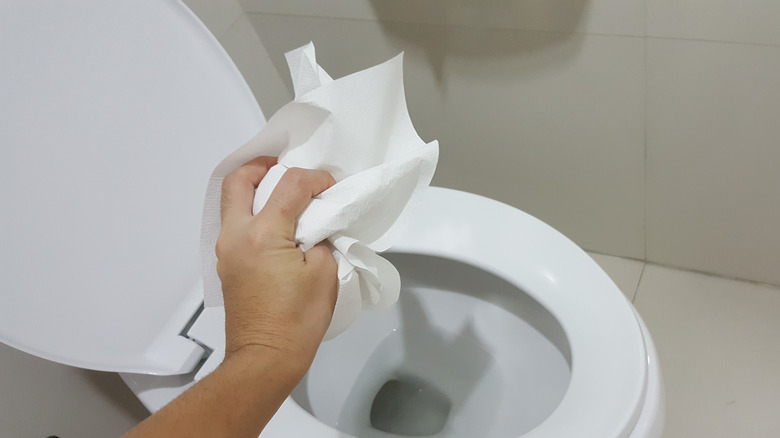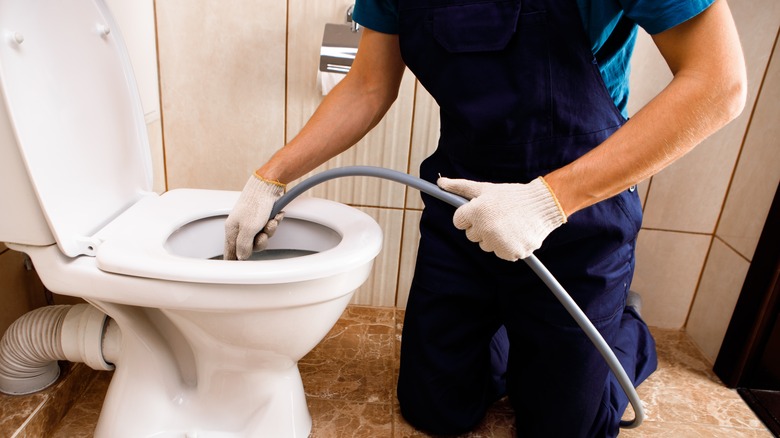Tips To Prevent Clogs If You're Stuck With A Low-Flow Toilet
While low-flow toilets are great for cutting back on water waste, some older models are unfortunately more prone to clogging than others. If you're looking for a quick way to prevent the need to pull out your plunger, just avoid flushing excessive toilet paper or non-flushable items, and consider upgrading to a newer model with improved flushing pressure if necessary.
Low-flow toilets have been around since the early 1990s and were the mandated answer to the Energy Policy Act (EPAct). In addition to their water-saving capabilities, the water-savvy porcelain thrones share another common, though not so great, characteristic — the tendency to frequently clog. That's because older low-flow toilets lack the pressure to properly clear the drain and trap. Unfortunately, this causes them to stop working on a seemingly routine basis. Unfortunately, modern water-efficient toilets don't come cheap. So while investing in a newer water-savvy toilet might not be in the cards at this exact moment, there are a few easy ways to minimize the occurrence of a clogged loo.
Here's how to work with your older low flow toilet
To minimize clogs in your low-flush loo, it's recommended to avoid the types of toilet paper that offer a little bit of extra cush for your tush. That's because these products are highly absorbent and can easily cause blockages due to limited water flow. In general, it's important to avoid flushing items that are extra absorbent, heavy, or do not break down easily. These belong in the trash can, not the sewer lines.
Forcing your toilet to flush can also be helpful in improving water flow. Just fill a large bucket with water and pour it into the toilet. This causes the toilet to flush on its own and will propel the water through the trap, clearing any debris. To save water, you can even put your bucket in the shower and capture the water that would otherwise be wasted. In addition, always keep a plunger within reach, regardless of the type of toilet. Make sure that the plunger is specifically designed to fit your toilet so that it can also effectively do its job.
Other possible reasons your toilet is clogging
In addition to insufficient water pressure, there are a few other major players when it comes to clogs in your low-flow toilet. A majority of homeowners are most likely unaware that modern toilets are connected to a vent located on the roof. This allows fresh air to enter the plumbing system and helps increase plumbing pressure. If the toilet vent becomes blocked by dirt or debris, it can cause a noticeable decrease in flushing pressure, which will make your low-flow toilet less efficient. If your low-flow throne keeps clogging, you might want to check the roof for bird nests or other debris.
One of the most prominent causes of clogs in low-flow toilets is also the most obvious: flushing non-flushable items like feminine hygiene products and wipes. These don't break down easily and can easily obstruct the already low flow of water. Moreover, general wear and tear is also a contributing factor. As with any plumbing fixture, older low-flow toilets will begin to deteriorate over time, and the components begin to degrade after frequent use. That means worn-out flappers and faulty flushing mechanisms will either need to be replaced or else you'll be committed to living by the plunger.


